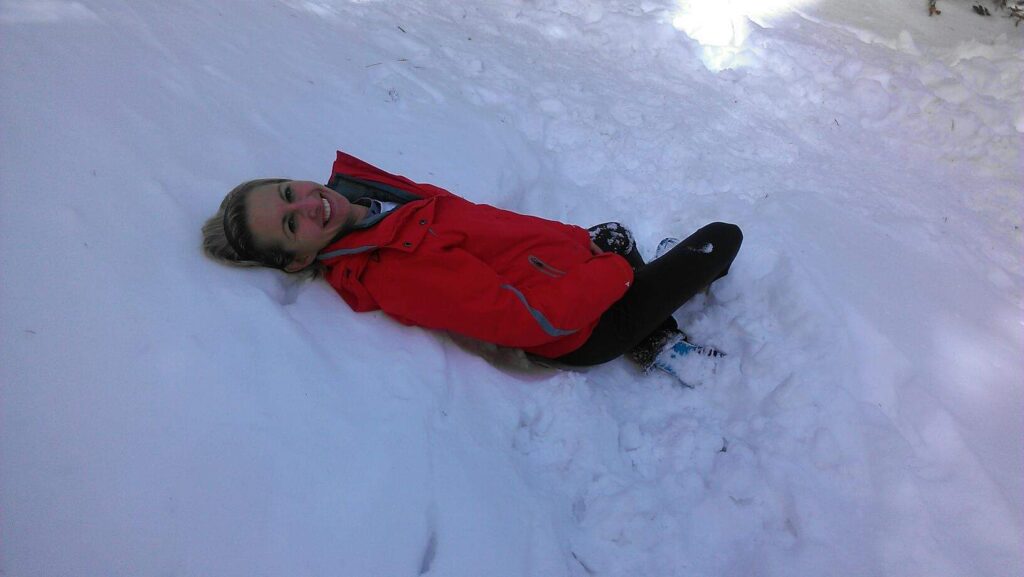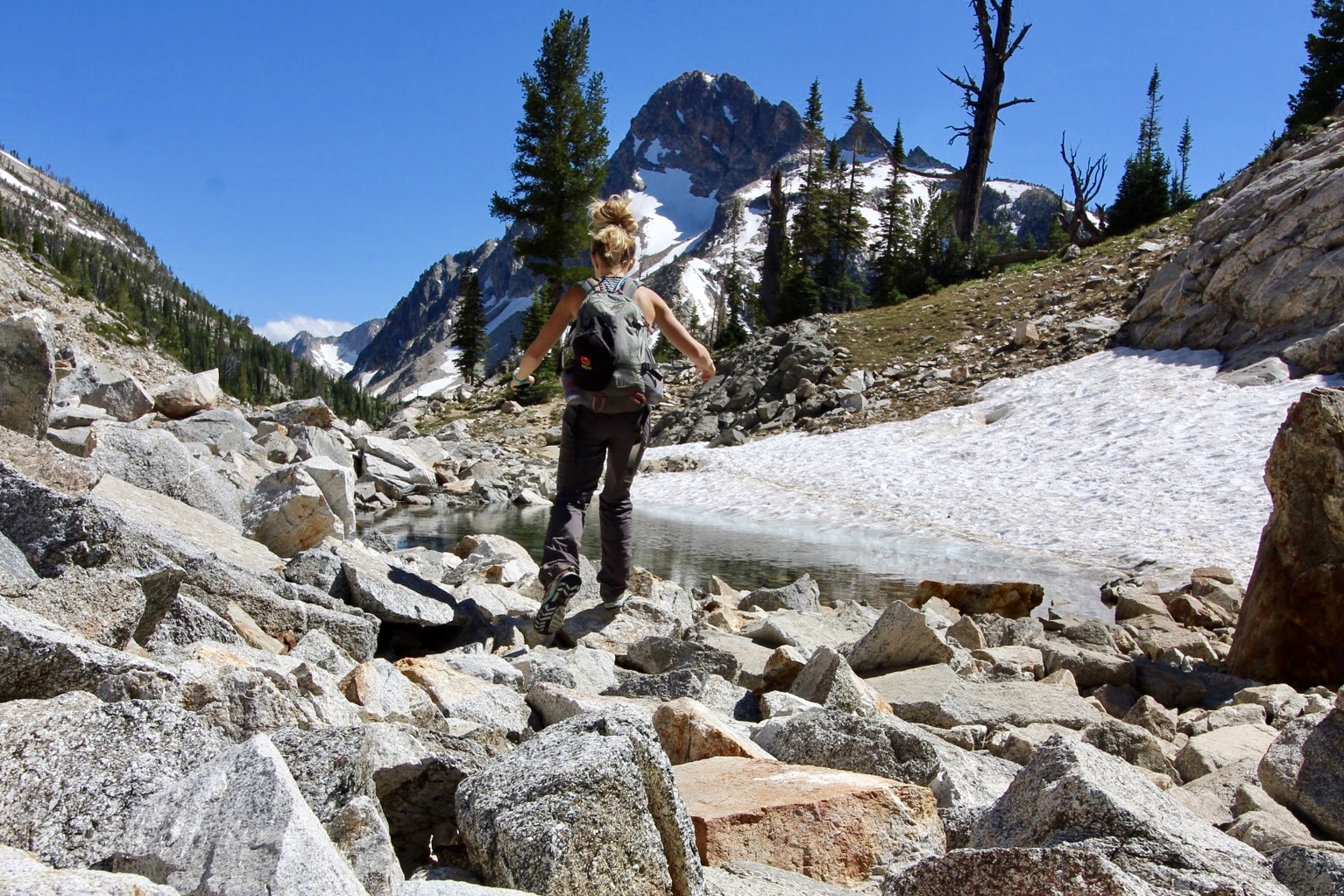
10 Tips for Beginner Hikers
Looking for beginner hiking tips? You’re in the right place.
I grew up “playing in the woods” and occasionally going on a family hike in New Jersey, but it wasn’t until my 20s that I really started hiking. My hikes were initially periodic and since I lived in Florida at the time, more often on vacations. A move to the west-coast and quite a few years later, I’ve racked up many trail miles, including over 1,000 miles solo hiking or trail running.
In my transition from beginner to experienced hiker, I learned a lot. Initially, I learned exclusively through word of mouth through more experienced friends. Then I took some REI Classes including a three-season survival class and a 2-day wilderness first aid class. I continue to learn!
While you don’t need much to get started hiking, knowing a few hings will make your experience safer and more fun!
Note: This post contains sponsored links. All opinions are my own and I only link products I truly recommend.
1. Start Small.
Start with an easy-rated trail within an hour or so of home (if possible) in temperate weather. It’ll help you get a sense of your hiking capabilities. Maybe it’s too easy and then you move up. Maybe it’s just right and you can look for similar hikes. Being near home can provide comfort and you’ll already be familiar with the weather making planning easier.
You may even be able to find a city park with trails to start on. For example, Portland, Oregon’s Forest Park is 5,200 acres with numerous trails including one that is 30-miles long!
2. Invest in Hiking Shoes.
I strongly recommend investing in a pair of hiking shoes (or hiking boots). Street shoes and gym shoes don’t usually have enough traction, making falls more likely. What type of shoe depends on your preferences. I prefer lightweight so typically hike in trail runners or a lighter-weight hiking shoe with thicker soles for bigger or wetter hikes. Other people swear by hiking boots. To learn more about the pros and cons of each, check out: Hiking FAQ: Boots or Shoes or Trail Runners for Hiking?

3. Save on Clothes.
In most cases, you can complete easy hikes with work-out clothes you already have. You don’t have to have “hiking” specific leggings, your gym leggings will do just fine. Just make sure you chose weather appropriate items made of athletic material. Avoid items made of cotton and jean. For more on day hike attire, check out What to Wear on Day Hikes.
4. Learn Basic Hiking Etiquette.
Just like with driving, there are some “rules of the road” for hiking. Here are some basics of hiking etiquette:
- Stay on marked trails.
- Groups should not take up the entire trail
- Bikers yield to hikers. Hikers yield to horses (and other pack animals)
- Music shouldn’t be played on speakers
- Downhill hikers yield to uphill hikers. This is the technical rule but also apply common sense – sometimes, uphill hikers (myself included) will gladly take a break and may indicate that they’ll step aside so you can pass. This is totally fine!
- Leave no trace (more info. below)
The National Park Service has a more detailed list of hiking etiquette here.
5. Find Fun Hikes.
If you’re new to hiking, you’re probably also new to finding hikes. In my experience, the best ways to find great hikes are asking other hikers, checking hiking apps, reviewing the websites of parks in the area, and outdoor travel blogs.
The go-to hiking apps are AllTrails and Gaia. I recommend AllTrails for beginners – it’s very easy to use and browse hikes of all lengths (including leisurely park strolls) near you. The free AllTrails version is great for browsing but if you’re going to use it to navigate, it’s probably worth the annual upgrade to be able to download maps for offline use.
As far as getting recommendations from people, you can ask others you strike up conversations with on the trail if they have any other hikes they’d recommend. You can also expand your hiking buddies (and recommendation sources) by joining digital groups and outdoor meetups. For example, there are lots of regional hiking groups on Facebook whose members meet up for hikes (usually free). Additionally, REI offers group hikes (paid). And of course, there’s the aptly named meetup.com.
6. Carry the Ten Essentials.
The best practice is to carry the Ten Essentials on day hikes. The ten essentials are foundational safety items. For more details, check out: The Ten Essentials of Day Hikes and Why You Need Them.
Look, I want to be honest here. Do I carry all of the 10 essentials on every single day hike? No. But do I carry most on most hikes? Absolutely! For example, if I’m going on a familiar hike in the PNW in summer when it’s light until 10PM, I probably won’t carry a head-lamp, but in other seasons, I will even if I’m heading out in the morning.
I cringe at my early hiking days carrying around just a plastic water bottle. I’m a much stronger hiker these days, but I take a lot more precautions because I’m also a much smarter hiker.
7. All Miles are Not Equal.
When planning your hikes and deciding what is within your capabilities, consider more than mileage. The elevation the hike is at, the elevation gained (i.e. amount of uphill), the temperature, and the terrain all impact the difficulty of the hike. For example, a flat mile on packed dirt in the woods in early fall will be much easier and quicker than a mile crossing boulder fields (think: walking on big rocks) in summer. Check photos and trip reports to gauge what fits what you are looking for. Even the same hike can be drastically different in different seasons!

8. Make a Friend.
Don’t hesitate to talk to other hikers. The overwhelming number of people on trails are friendly! It’s one of the things that I like most about hiking. Other hikers are typically happy to share a “hello,” in passing, answer questions, and offer an encouraging word if you express that the hike is wearing you out.
9. Tell a Friend Where You’re Going.
Share your plan with a trusted friend who is not going on the hike so they can alert the appropriate authorities if you don’t return. Tell them where you’re planning to park, your intended route, and when you’ll be back. Be sure to leave some wiggle room in your return time – hikes often take longer than you think, you may be out of cell service for part of the drive.
This is a safety best practice for the worst-case scenario. It is very unlikely that this contingency will come into play. As you begin to hike further from home and more frequently, you can also consider purchasing a satellite messenger, like the Garmin inReach Mini, that allows you to send short messages and your location out without cell service.
10. Leave it Like You Found It.
“Leave No Trace” or “LNT” is a set of foundational practices that help ensure that the outdoors remain wild for generations to come. Put differently, they help reduce our impact on the wild. Read the 7 Leave No Trace Principles here. . .and follow them. The LNT organization stays up to date on best practices through consultation with experts and updates the principles as needed so their website is a great source of information.
Bonus: Have fun! Take snack breaks, photo breaks, turn around when you feel like it. . . do whatever you need to do to make it fun. There’s no single “right” way to be a hiker. Over time, you’ll learn more about your hiking preferences (like whether you like flat woodsy strolls or prefer “type B fun” mountainous treks) and can find more hikes and hiking buddies that fit the bill.
GEAR CHECK
Before heading out for your hike, don’t forget:
Hiking Shoes
The Ten Essentials
Comfy dry shoes for the car ride home
Save for Later
Want to save this for easy access later? Pick your favorite image and Pin to Pinterest.

